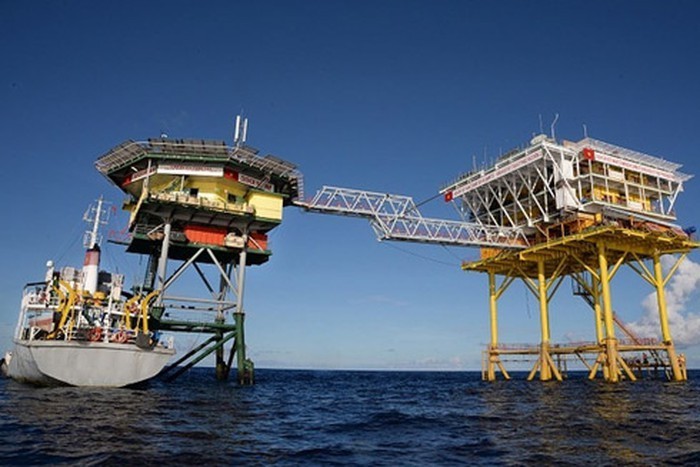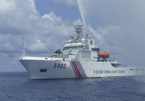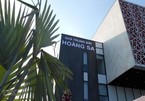Associate Prof Dr Nguyen Chu Hoi, former deputy director of the General Department of Vietnam Seas and Islands, gives his analysis of the geological and geographic structure of the East Sea in general and Vanguard Bank in particular.

The treasury of the East Sea
The East Sea has two important features. The most important is the continental shelf. Vietnam is the country with the most natural continental shelf.
The other feature is the deep water structure. This is a characteristic formed 240 million years ago. Of the seven large archipelagoes related to corals in the East Sea, five islands are in deep water structure.
All of these islands are 100 percent coral oases and they were formed on the ancient volcanic base of the ocean crust 240 million years ago. The five archipelagos in the deep water structure include the two archipelagos of Hoang Sa and Truong Sa.
“For the East Sea, as there are corals, there are fish. As there are fish, fishery develops. And as there is fishery, there are fishermen. Therefore, the five archipelagoes determine the development of fisheries of all countries in the area. This is a typical characteristic,” Hoi said.
“The five archipelagoes have a very important geostrategic position. Experts say that if any country can control Hoang Sa (Paracel) and Truong Sa (Spratly), it will be able to control the entire East Sea,” he said.
Ninety percent of the current system in the East Sea is seasonal. Any effect that occurs in any location of the East Sea, especially the area in the middle of deep water, will affect the rest of the East Sea.
| The Vanguard bank is on the Vietnamese continental shelf. Vietnam has been using and exploiting it in a stable manner. This has never been a sovereignty-disputed area. |
It is the deep water structure that allows the East Sea not only to be rich in oil and gas potential on the continental shelf, but also to attract and include all other resources including living and non-living organisms. It can be said that deep water structure is a treasure of the East Sea.
“They (the Chinese) draw an illegal cow tongue line that embraces the entire treasure at the bottom of the sea, in the very richest area and exactly in the deep water structure,” Hoi commented.
The position of Vanguard bank
“Vanguard bank and the reefs in this area are an inseparable part of Vietnam's continental shelf to the southeast, separated from Vietnam's Truong Sa (Spratly) Islands by a deep trench, so according to the 1982 UNCLOS (United Nations Convention for the Law of the Sea), it doesn’t belong to Truong Sa Islands,” Hoi said.
The Vanguard bank geologically belongs to the continental shelf of Vietnam and is not part of the Spratly Islands. Lawyers of international public law affirm that Vanguard bank is not located in the sovereignty overlapping area. Therefore, Vanguard bank has never been a contested area of sovereignty.
Vanguard bank on the continental shelf of Vietnam has been used and exploited by Vietnam for a long time. It does not just appear and is not an area for sovereignty dispute.
The British Royal map in 2001 using infrared ray capture technique clearly shows the structural characteristics of Vanguard bank.
Hoi emphasized that the five archipelagos of the deep water structure in the East Sea have always been geographically published in official documents of the International Maritime Organization and international geographic documents. Scholars have never conceived that the Spratlys include Vanguard bank.
The benefits from the East Sea
According to Hoi, because of these features of the East Sea, the East Sea has long become a concern of many countries, including large ones.
Because of this multilateral interest, there are many complex disputes related to freedom of aviation, navigation, sovereignty issues and unilateral sovereignty claims.
The behavior of infringing on the Vietnamese exclusive economic zone of Haiyang 8 with accompanied ships has stirred strong protest from many countries, including the US, EU and Japan through parliaments or administrations.
“We can see reactions through UN international forums or ASEAN and the European community as well. And then the reactions from different scholars. I think that there is more international response this time and the response is more concentrated,” Hoi said.
“They all expressed the concern and opposition against the actions of defying UNCLOS in settling the disputes in the East Sea and the happenings in the area,” he said.
According to Hoi, the international community is supporting Vietnam’s righteous voice and Vietnam's attitude in its efforts to settle disputes in peace and comply with international laws.
On October 14, the Vietnam Communist Party Newspaper held a seminar with the topic "Vietnam's legal rights and interests in the East Sea according to international law".
At the seminar, guests focused on analyzing, exchanging and clarifying issues related to Vietnam's legitimate rights and interests in the South China Sea; clarifying the basic contents of UNCLOS; and proposing solutions to improve the efficiency of management and protection of sovereignty over islands and islands of the country.
The attendants at the seminar include Dr. Tran Cong Truc, former Head of Government Border Committee, Assoc. Prof Dr. Nguyen Chu Hoi, former Deputy General Director of Vietnam Administration for Sea and Islands and Dr. Ta Dinh Thi, General Director of Vietnam General Department of Sea and Islands.
Thai An

Chinese coastguard ships ‘deliberately visible' in the East Sea
Some Chinese coastguard vessels deployed in the East Sea have deliberately made themselves visible to rival claimants of the contested waters by turning on tracking signals – a move analysts described as an attempt to assert sovereignty.

Vietnam owns convincing evidence of sovereignty in East Sea: Russian expert
Vietnam owns convincing evidence of its sovereignty in the East Sea, Russian expert Grigory Trofimchuk, Chairman of the Expert Council of the Eurasian Foundation for Support of Scientific Research has said.
 Bai Tu Chinh (Vanguard bank) is on the Vietnamese continental shelf. Vietnam has been using and exploiting it in a stable manner. This has never been a sovereignty-disputed area." itemprop="description" />
Bai Tu Chinh (Vanguard bank) is on the Vietnamese continental shelf. Vietnam has been using and exploiting it in a stable manner. This has never been a sovereignty-disputed area." itemprop="description" />